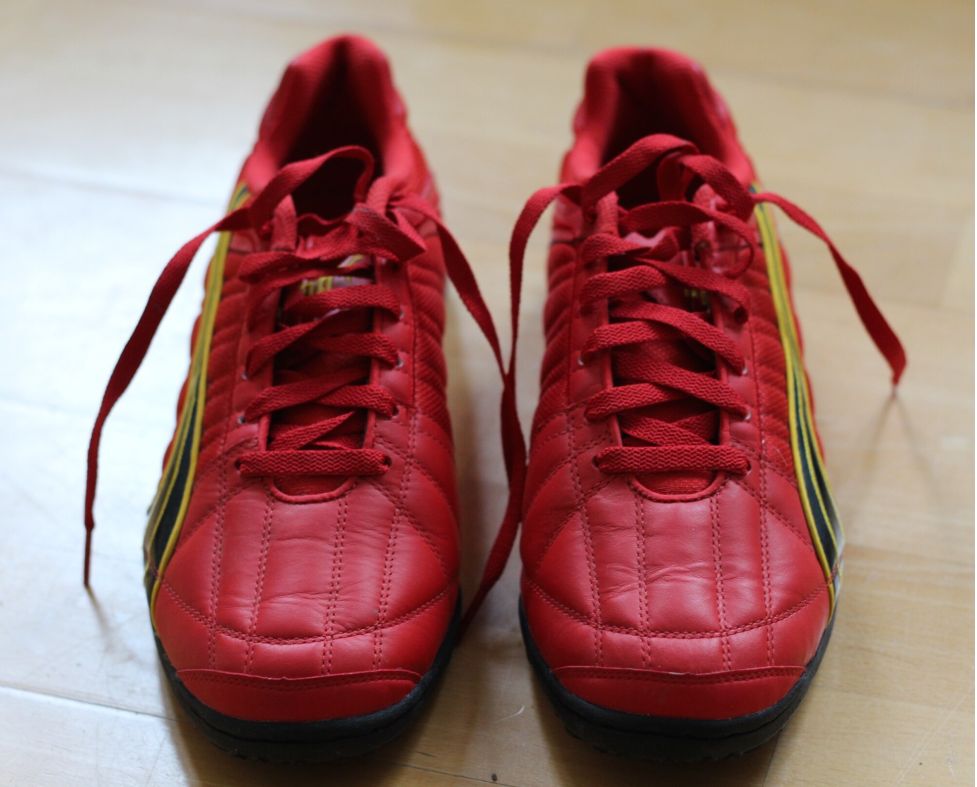The $127.3 billion athletic footwear industry is growing at a rate of almost 5% every year, thanks to increased interest in the health benefits of sports.
This industry isn’t all about formal sports, though. Shoes for athletes are also a comfortable and trendy choice when it comes to leisurewear.
Whether you want to enhance your performance or upgrade your look, there are a few things to consider when you go shoe shopping. Here’s your guide to choosing the best sports shoes for men.
Where to Go Shopping for Sports Shoes
If you’re shopping for shoes to use for sports, it’s best to visit a specialty store. At these outlets, you’ll get all the assistance you need to help you choose the perfect pair.
If you prefer to shop online, the same applies. You’ll find much useful advice on websites dedicated to your sport, as well as reviews from previous customers.
Types of Sports Shoes for Men
Manufacturers usually design men’s sneakers with a particular sport in mind. These different types of shoes include:
- Walking and running shoes
- Training
- Court Sports
- Field sports
- Track and field sports
- Specialty sports, such as golf or bicycling
- Outdoor sports like boating and fishing
You must consider a few factors before you use one type of sports shoe for multiple activities, read more now.
Things to Consider When Choosing Sports Shoes
There are a few things to keep in mind when selecting shoes for each of these sports. These are:
Running Shoes
Most good running shoes have plenty of cushioning to absorb the shock from running on hard surfaces.
A shoe with good traction, adequate flexibility, stability, and shock absorption can help prevent stress fractures, tendinitis, shin splints, and heel pain.
Walking Shoes
Comfort is the most desirable trait in a walking shoe, but good walking shoes should also offer extra shock absorption in the heel and under the ball of the foot.
These features reduce burning and tenderness in the bottom of your foot, as well as heel pain.
A rounded, or rocker sole, encourages the natural roll of the foot when walking, and it’s important to choose a shoe with a soft, comfortable upper, and smooth tread.
Hiking Shoes
If you’re planning extreme hiking adventures, boots are a better bet than shoes, but sturdy mid-cut walking shoes work very well for less intense outings.
Be sure to choose shoes that offer water resistance, durable upper materials, and breathability. Synthetic materials are cheaper than leather and dry quicker, but they won’t last as long.
You can also opt for shoes with insulation or waterproof membranes at the expense of breathability.
Court Sport Shoes
This category includes shoes for volleyball, tennis, and basketball. They should support the forward, backward, and side-to-side movements of these activities.
Tennis Shoes
Tennis involves many shifts in weight and side-to-side movements. For this reason, you need a shoe that offers outstanding stability for your feet.
A flexible sole under the ball of the foot makes it easier to get around on a grass court, but harder courts demand a little more tread.
Basketball Shoes
The best basketball shoes have a stiff, thick sole for extra stability. Many players prefer high-top basketball shoes, but these shoes don’t always decrease the risk of ankle injuries and sprains.
Shoes for Field Sports
Field sports include baseball, hockey, football, and more. Each of these requires shoes designed specifically for these activities.
Most field sports shoes have spikes, cleats, or studs under the sole for added traction when moving at speed.
Cross Trainers
Cross trainers offer a solution for those who enjoy a variety of sports by combining several of the above features.
The best ones have excellent flexibility at the front of the foot to accommodate running, plus good lateral support for quick movements to the side.
Choose Sports Shoes to Suit Your Feet
Those with ankle and foot problems can still enjoy sports if they choose the best pair of shoes for the job. There are ways to relieve the symptoms of your foot issues without a prescription.
You must ensure you choose sports shoes that can accommodate these fixes, so take them along when you go shoe shopping.
These are some general pointers for problem feet:
Heel Cups
A heel cup made of plastic or rubber slips into the back of any shoe for extra support in the heel area. This can alleviate the pain beneath your heel caused by plantar fasciitis.
Metatarsal Pads
These pads help alleviate pain under the ball of the big toe or your other toes. They’re either made of felt or rubber, with an adhesive on the flat side.
When you fix this pad to the inside of the shoe close to the heel, it distributes the pressure normally felt on the ball of the foot and the toes.
Arch Supports
Arch supports come in a variety of materials and act to relieve pain in the arch of your foot. You can remove the insoles from your shoes and replace them with arch supports if necessary.
Some high-end sports shoes have advanced arch support systems, so investigate this before you add things you don’t need.
If you have a serious, long-term issue with your feet, like flat feet, turf toe, or Achilles tendinitis, you’ll need custom arch supports. These supports target particular areas to provide relief for your unique situation.
It’s best to ask your orthopedic specialist for advice when choosing orthotic footwear to suit your condition.
Finding Your Perfect Fit
Nothing breaks your stride like shoes that don’t suit the task at hand.
Ill-fitting shoes can quickly lead to blisters, sprains, and foot problems. Even worse, they’ll decrease your motivation to stay fit.
The above pointers are the most important thing to consider when choosing sports shoes for men, but you should always make comfort your priority when shoe shopping.
Branded sports shoes have become the most popular footwear of all time thanks to their versatility and good looks. Browse our blog for the latest updates on other fashion trends.


